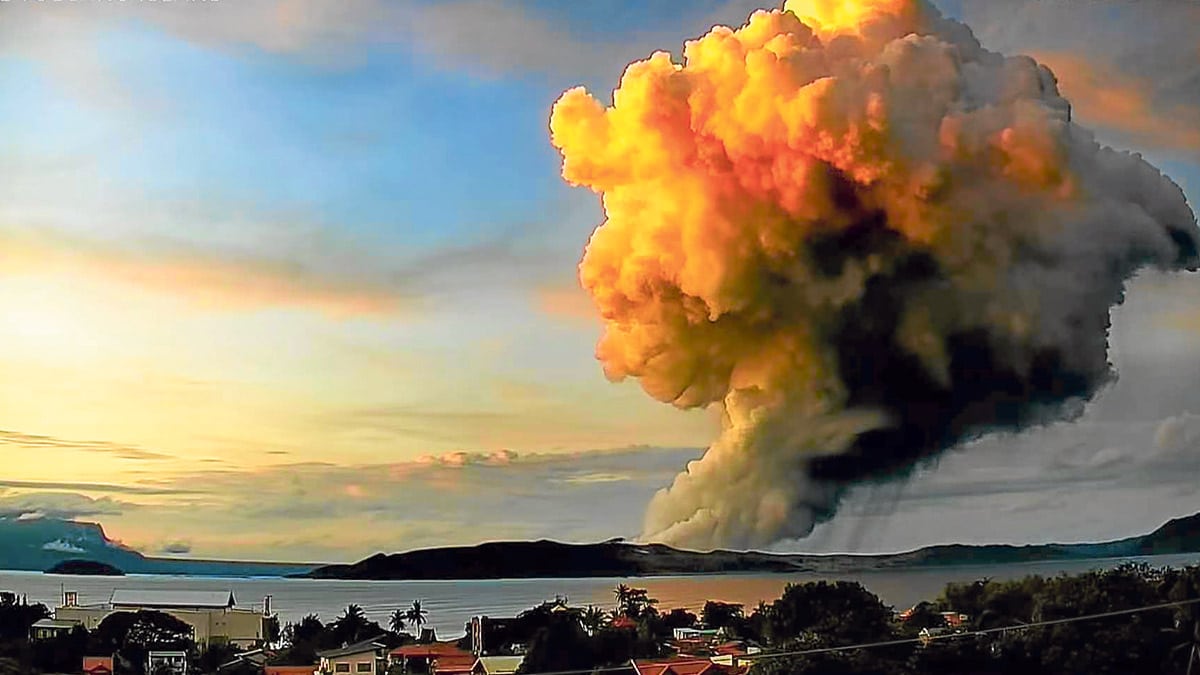Increased seismic activity recorded at Taal Volcano

SMOKE IN THE SKY A minor eruption by Taal Volcano in Batangas early Tuesday, which shows plumes rising 2,800 meters above the volcano island in the middle of Taal Lake, is captured by the observation unit of Talisay town. —Talisay Municipal Disaster Risk Reduction and Management Office Facebook photo
LUCENA CITY, QUEZON, Philippines — The Philippine Institute of Volcanology and Seismology (Phivolcs) on Monday reported an increase in seismic activity at Taal Volcano in Batangas province.
Since Jan. 4, stations of the Taal Volcano Network (TVN) located on Taal Volcano Island (TVI) have been recording a significant rise in real-time seismic energy measurement (RSAM), Phivolcs said in an advisory.
It also reported that a total of 12 volcanic earthquakes, including six volcanic tremor events, were recorded on Jan. 1.
The agency clarified that volcanic earthquakes originate from active volcanoes and exhibit distinct patterns characterized by their “mode of arrivals, periods, and amplitudes.”
Volcanic tremors, on the other hand, are continuous seismic signals with either regular or irregular wave patterns and low frequencies.
Phivolcs also noted from visual observations “the absence of a degassing plume from the Taal Main Crater since the start of RSAM increase.”
According to the agency, the volcano has been degassing sustained levels of sulfur dioxide, or SO2, for the past four years, with the latest emission measured on Dec. 30 last year, with a daily average of 2,753 metric tons.
“The sharp increase in RSAM and the lack of observable degassing from the Main Crater may indicate [a] blockage or plugging of volcanic gas pathways within the volcano, which may lead to short-term pressurization and trigger a phreatic or even a minor phreatomagmatic eruption,” Phivolcs warned.
Minor blast
On Dec. 3, Taal Volcano experienced a minor phreatomagmatic eruption that lasted for four minutes.
The volcano remains under Alert Level 1, indicating abnormal activity. But Phivolcs stressed that the alert level does not signify the cessation of unrest or the threat of eruptive activity.
“At Alert Level 1, sudden steam-driven or phreatic or minor phreatomagmatic eruptions, volcanic earthquakes, minor ashfall, and lethal accumulations or expulsions of volcanic gas can occur and threaten areas within TVI,” it said.
The US Geological Survey defines phreatic eruptions as steam-driven explosions, which occur when water beneath the ground is heated by magma, lava, hot rocks, or new volcanic deposits.
Phreatomagmatic eruptions, on the other hand, happen when magma and water interact, leading to an ejection of steam and pyroclastic fragments.
Phivolcs warned the public against entering Taal’s permanent danger zone as it also urged local governments to continuously monitor and assess the impact of volcanic SO2 on affected communities.